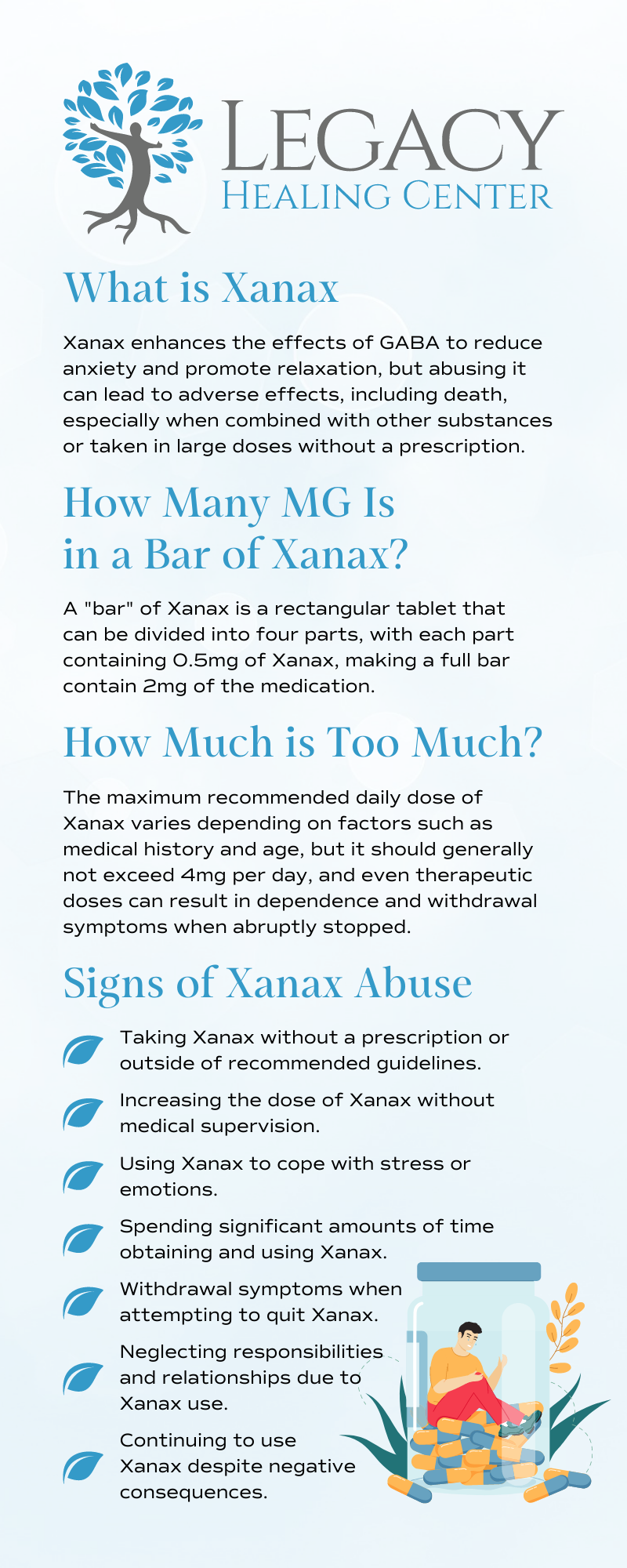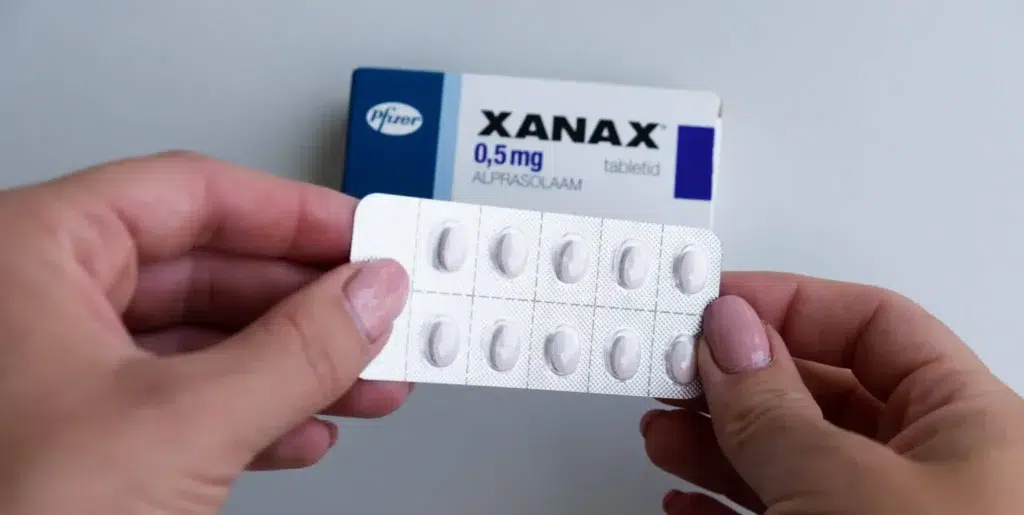How Much Xanax Is Too Much?
At our rehab center, we understand the dangers of prescription drug abuse, and Xanax (a brand name for alprazolam) is no exception. Xanax is a benzodiazepine commonly prescribed to treat anxiety and panic disorders. While it can be an effective treatment option, understanding how much Xanax is too much is important.
What Is Xanax?
Xanax works by enhancing the effects of gamma-aminobutyric acid (GABA), a neurotransmitter that slows down brain activity. This results in a calming effect, reducing anxiety and promoting relaxation. However, when taken in large doses or without a prescription, Xanax can lead to a variety of adverse effects, including drowsiness, confusion, slurred speech, memory impairment, poor coordination, reduced inhibitions, mood, paranoia, respiratory depression, coma, seizures, and even death. Xanax abuse is particularly dangerous when combined with other substances, such as alcohol or opioids, or when too much Xanax is taken, as this can increase the risk of overdose and death.
How Many MG Is in a Bar of Xanax?
A “bar” of Xanax typically refers to a rectangular tablet that is made to be divided into four equal parts. Each part of the bar contains 0.5mg of Xanax, so a full bar contains a total of 2mg of the medication. It is important to note that Xanax should only be taken as prescribed by a healthcare provider and that misuse or abuse of the medication can have serious consequences.
Signs of Xanax Abuse
It is crucial to recognize the signs of Xanax abuse, such as taking too much Xanax, to seek professional help if needed. Some common signs of Xanax abuse include:
- Taking Xanax without a prescription or outside of recommended guidelines.
- Increasing the dose of Xanax without medical supervision.
- Using Xanax to cope with stress or emotions.
- Spending significant amounts of time obtaining and using Xanax.
- Withdrawal symptoms when attempting to quit Xanax.
- Neglecting responsibilities and relationships due to Xanax use.
- Continuing to use Xanax despite negative consequences.
Legacy Healing Center Can Help You or a Loved One if Someone Is Taking Too Much Xanax
Xanax abuse is a serious issue that can lead to addiction, overdose, and death. While the recommended dose of Xanax varies depending on individual factors, any amount taken without a prescription or outside of recommended guidelines is considered abuse, and too much Xanax. At Legacy Healing Center, we provide personalized addiction treatment programs that address the physical and psychological effects of Xanax addiction. If you or a loved one is struggling with Xanax abuse, don’t hesitate to reach out to us for professional help. Our experienced team can help guide you through the recovery process and provide the necessary tools for long-term sobriety.
If you or a loved one is currently struggling with an active addiction, our Legacy Healing detox centers have the levels of care and therapy programs that can aid in a safe and comfortable recovery from withdrawals.
Call us today at 888-534-2295 to learn more about these programs and how they can help you overcome your own addiction.

Xanax Overdose FAQs
What are three side effects a person can experience after taking Xanax?
Xanax can cause side effects such as drowsiness, dizziness, and confusion. These symptoms result from the drug’s effect on the central nervous system, slowing down brain activity to create a calming sensation. Other potential side effects include nausea, memory problems, and irritability, depending on the dose and the individual’s response.
What does Xanax really do to your body?
Xanax enhances the activity of GABA, a neurotransmitter that slows down brain function, creating a calming effect. This makes it effective for reducing anxiety and panic. However, it also depresses the central nervous system, leading to side effects like drowsiness and slowed reaction times. Over time, prolonged use can lead to tolerance, dependence, and withdrawal symptoms, affecting both mental and physical health.
What is benzo belly?
Benzo belly refers to digestive issues, such as bloating, nausea, and abdominal pain, experienced during benzodiazepine withdrawal. This condition occurs because benzodiazepines, like Xanax, affect not only the brain but also the gut, which has its own network of nerve cells. As the body adjusts to functioning without the drug, digestive discomfort and changes in appetite can arise, often requiring medical guidance for relief.


